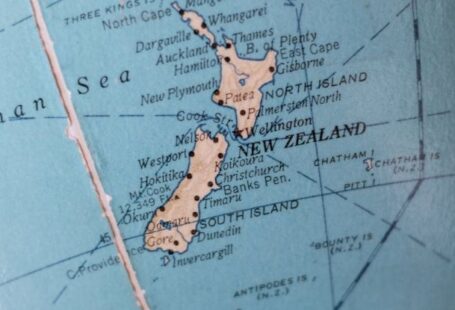Cartographers play a crucial role in creating maps that are accurate and reliable. The art and science of cartography involve much more than just drawing lines and placing labels on paper. It requires a deep understanding of geography, geodesy, surveying, and technology. Ensuring map accuracy and reliability is a complex process that involves attention to detail, precision, and a commitment to quality. In this article, we will delve into the methods and techniques used by cartographers to achieve this goal.
**Understanding the Importance of Accuracy**
Maps are essential tools that help us navigate the world around us. Whether it’s planning a road trip, conducting field research, or analyzing geographic data, maps provide us with valuable information. However, if a map is inaccurate or unreliable, it can lead to confusion, misinterpretation, and even dangerous situations. Cartographers understand the importance of creating maps that are precise and trustworthy, and they employ various methods to achieve this.
**Collecting Reliable Data**
One of the first steps in creating an accurate map is collecting reliable data. Cartographers rely on a variety of sources, including satellite imagery, aerial photography, ground surveys, and geographic information systems (GIS). By gathering data from multiple sources, cartographers can cross-reference information and ensure its accuracy. High-quality data is the foundation of a reliable map, and cartographers take great care in selecting and validating the information they use.
**Utilizing Advanced Technologies**
Advancements in technology have revolutionized the field of cartography. Cartographers now have access to powerful tools such as geographic information systems (GIS), remote sensing, and global positioning systems (GPS) that allow them to map the Earth with unprecedented precision. These technologies enable cartographers to create detailed, up-to-date maps that accurately represent the world around us. By utilizing these tools, cartographers can improve the accuracy and reliability of their maps.
**Applying Cartographic Principles**
Cartographers adhere to a set of principles and guidelines that govern the design and creation of maps. These principles include things like scale, projection, symbolization, and generalization. By following these standards, cartographers can ensure that their maps are accurate, clear, and easy to interpret. Cartographic principles help to maintain consistency across different maps and ensure that information is presented in a logical and organized manner.
**Quality Control and Peer Review**
Before a map is published or distributed, it undergoes a rigorous quality control process. Cartographers carefully review each map to check for errors, inconsistencies, and inaccuracies. They also seek feedback from peers and experts in the field to ensure that the map meets industry standards. Peer review is an essential part of the cartographic process, as it helps to identify potential issues and improve the overall quality of the map.
**Continuous Updates and Revisions**
The world is constantly changing, and cartographers must keep their maps up-to-date to ensure their accuracy and reliability. Roads are built, rivers change course, and urban areas expand – these changes must be reflected in maps to maintain their relevance. Cartographers regularly update their maps based on new data and information, ensuring that users have access to the most current and accurate geographic data available.
**Embracing Innovation and Collaboration**
Cartographers are always looking for new ways to improve their maps and enhance their accuracy. They collaborate with experts in various fields, such as geology, climatology, and urban planning, to gather specialized knowledge and data. By embracing innovation and collaboration, cartographers can create maps that are not only accurate and reliable but also informative and engaging.
**In Conclusion**
Creating accurate and reliable maps is a challenging but essential task for cartographers. By collecting reliable data, utilizing advanced technologies, applying cartographic principles, and engaging in quality control and peer review, cartographers ensure that their maps meet the highest standards of accuracy and reliability. Continuous updates, revisions, innovation, and collaboration are key components of the cartographic process, allowing cartographers to create maps that accurately represent the dynamic world we live in. Through their dedication to precision and quality, cartographers play a vital role in helping us navigate and understand the world around us.





